It’s discouraging to work hard and continue to see some students struggle to comprehend despite hours and hours of strategy instruction year after year after year.
You might wonder:
Am I missing something?
Am I teaching the “right strategies”?
Are there some strategies that matter more than others?
What makes a strategy a strategy, anyway?
These and many other questions about teaching children to comprehend were on our minds as we dug into the research about strategy instruction. We were admittedly surprised at some of what we found along the way.
What are reading comprehension strategies, anyway?
Comprehension Strategies are the essential, in-the-brain processes that proficient comprehenders engage automatically.
This may seem pretty obvious, but comprehension strategies are essential for reading comprehension. That means comprehension doesn’t happen without them. These strategies happen inside the brain and are automatic for proficient readers.
For example, noticing connections between ideas in a text—analyzing the text’s structure—is an essential strategic process for comprehension. On the other hand, highlighting words that indicate that a paragraph is comparing two things—same as, different, in comparison, like, etc.—is not practicing a comprehension strategy, even though it may be an important study skill or scaffold for learning to pay more attention to a text’s structure. This is because highlighting is not essential for comprehension (hence, not a strategy). However, tuning in to the relationships and connections between words, sentences, phrases, and paragraphs in a text—the organizational structure—is super ESSENTIAL, so it’s a strategy!
Confusing, right? Because of this and other confusion around the term strategy, we refer to these larger, strategic processes—which are essential for comprehension—as thinking moves, rather than as strategies.
Which reading comprehension strategies, or thinking moves, are most important?
Research reveals that readers don’t engage in a whole bunch of thinking moves; a mere handful gets the job done. In fact, researchers consistently identify a small number of these overarching processes essential for comprehension, which we refer to as the Strategic Six Thinking Moves. We wrote about the Strategic Six in the second Shifting the Balance book, co-authored with Katie Egan Cunningham.
Meet The Strategic Six Thinking Moves: The Essential Strategic Processes for Reading Comprehension
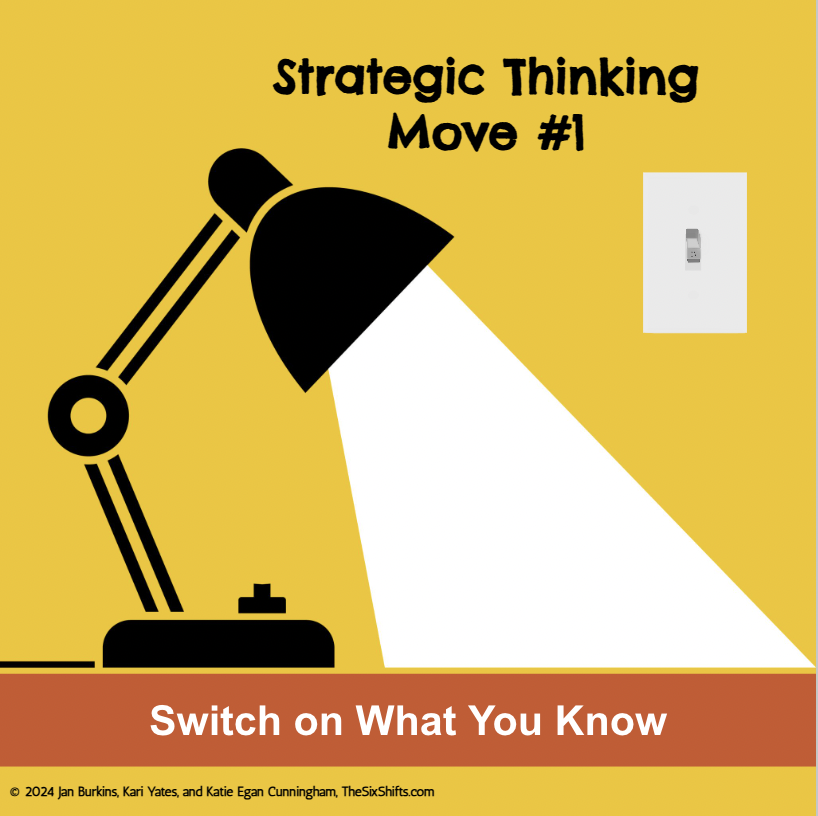
Strategic Thinking Move #1: Switch on What You Know (Activating Background Knowledge)
Switching on what you know involves activating knowledge before, during, and after reading. This includes connecting ideas as they accumulate, noticing gaps in your knowledge, and filling in those gaps as you read. This is more than learning some vocabulary before reading. It is about activating semantic networks and then accessing them throughout reading. To read a book about fossils, you will need to access what you know about digging, dirt, rocks, dinosaurs, time, and much more
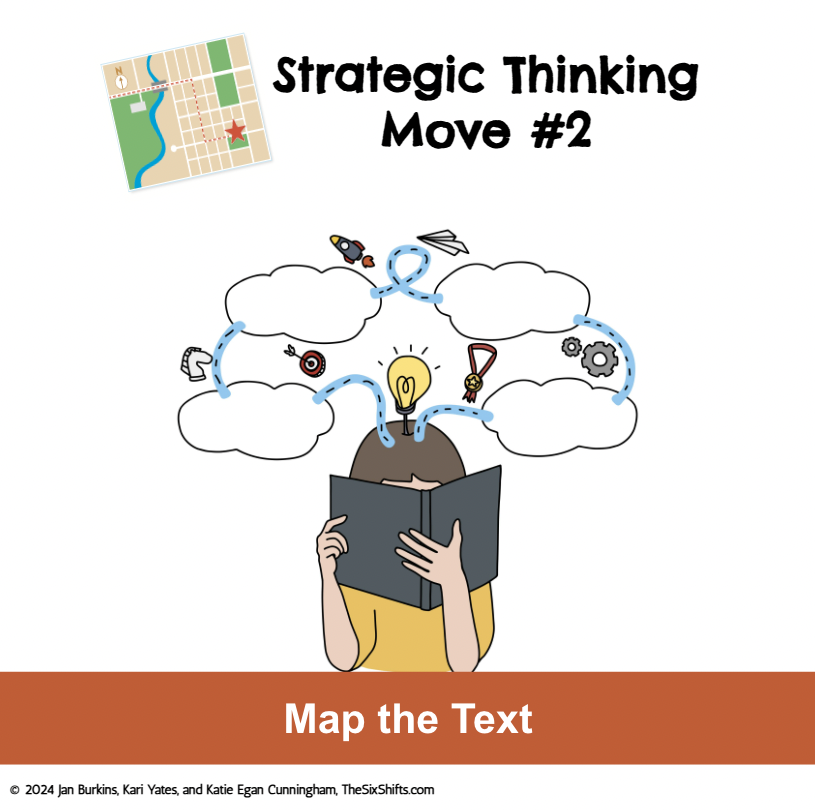
Strategic Thinking Move #2: Map the Text (Noticing Text Structures)
Mapping the text is about noticing and understanding the many levels of connection between words, phrases, and sentences across a text. This is more than noticing that a text describes sequential steps in a process, such as how to bathe a dog. It also involves knowing when “it” in the passage refers to the dog shampoo, the temperature of the water, or the matte in Rocky’s ear. And it is understanding the nesting dolls of text construction—how words contribute to sentences, sentences contribute to paragraphs, paragraphs contribute to sections, and more.
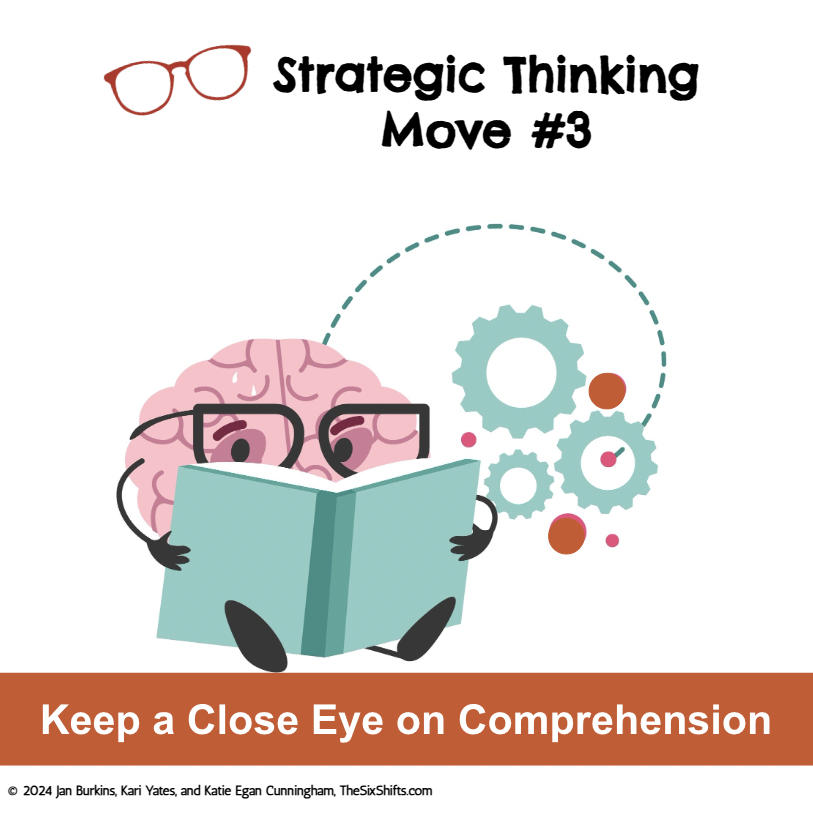
Strategic Thinking Move #3: Keep a Close Eye on Comprehension (Monitoring Comprehension)
Keeping a close eye on comprehension is about paying attention as you are reading and building (and revising) understanding as you connect new information to what you have already read. This constant thinking enables you to notice when something doesn’t make sense. The ongoing, internal process of monitoring understanding is what helps you notice when you incorrectly read, “She had a really big house, so it could run for a long time,” and then reread the sentence correctly with the correct word, horse.
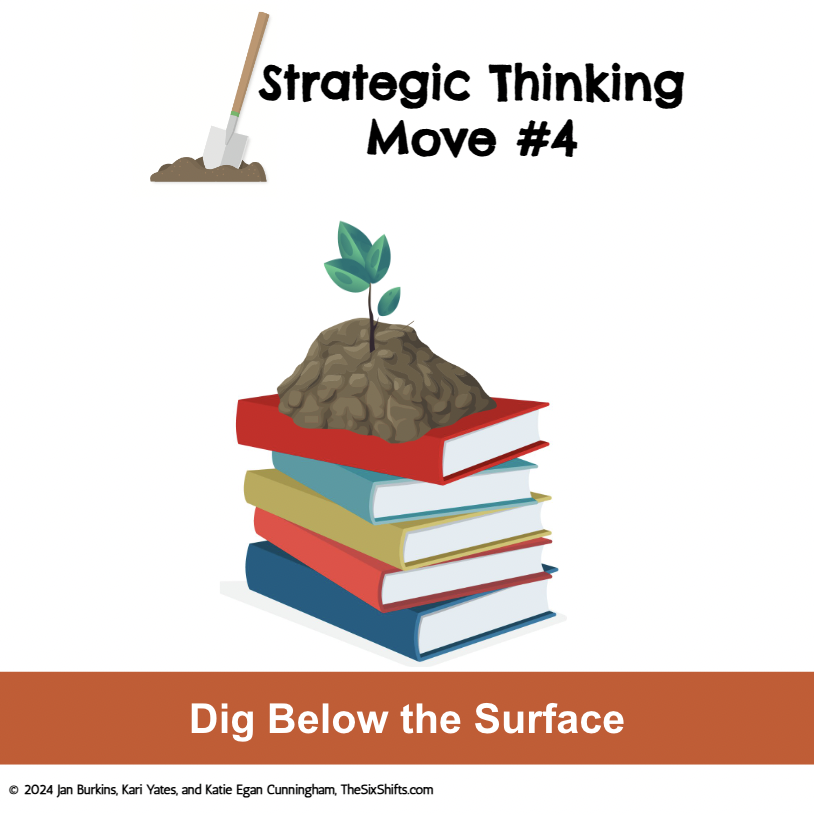
Strategic Thinking Move #4: Dig Below the Surface (Ask and Answer Questions)
Digging below the surface is about thinking deeply as you read. It involves engaging with the ideas in the text and asking and answering your own questions as they arise. Digging below the surface is also about more than answering comprehension questions at the end of a text; rather, it includes the constant questioning, searching, and thinking that makes reading active. It’s about REALLY engaging with a text, so much so that you notice your own curiosity, connect ideas, reflect, arrive at new insights, and stretch or even change your thinking.
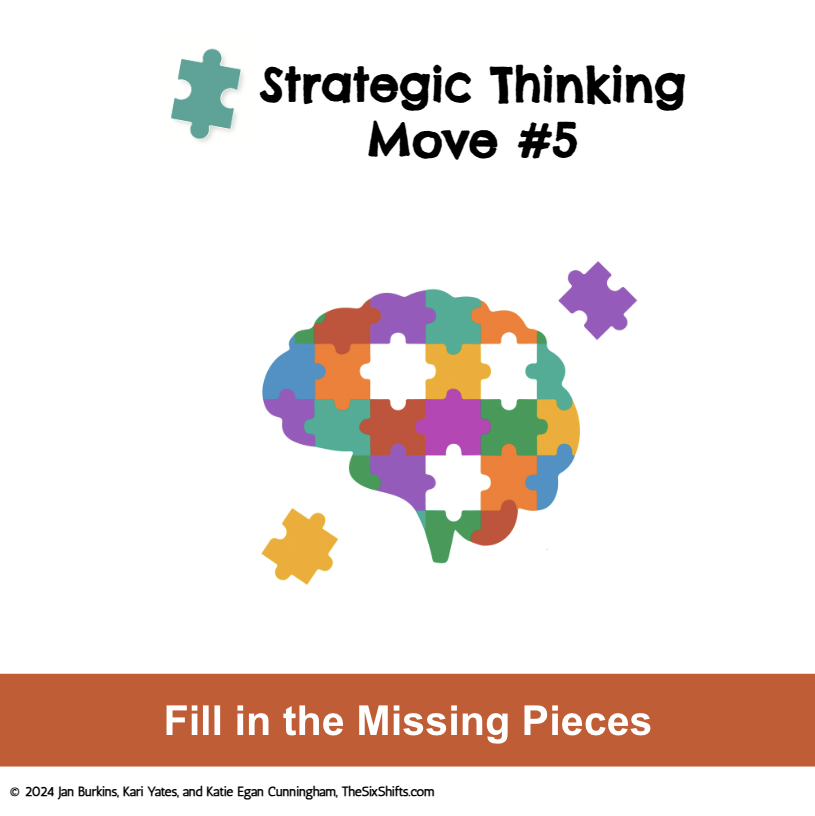
Strategic Thinking Move #5: Filling in the Missing Pieces (Inferring)
Filling in the missing pieces is about understanding what the author doesn’t explicitly say in the text. It’s about filling in any information that has been left out for the sake of efficiency and brevity. Filling in the missing pieces is more than occasionally stopping to notice an obvious leap in ideas in the text; we fill in missing pieces constantly. These inferences help you understand that a recipe that tells you to “cook on high” is suggesting that you turn on the stove rather than hold the pot high in the air. You understand that when the text describes the winner of the race as “on fire,” the figurative language doesn’t imply an emergency.
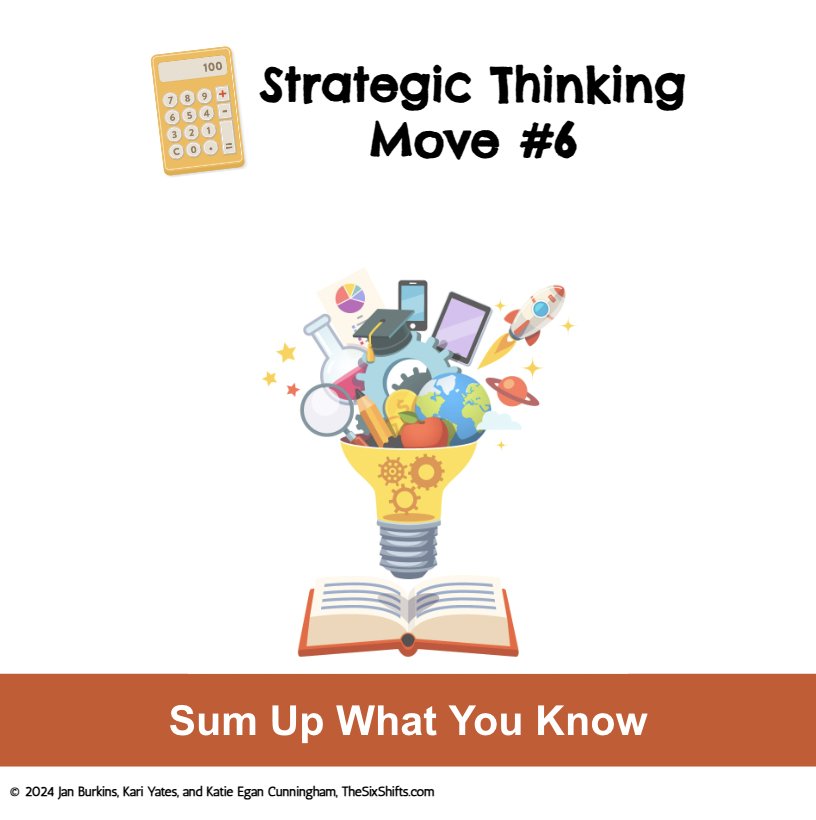
Strategic Thinking Move #6: Sum Up What You Know (Summarizing Along the Way)
Summing up what you know is about constantly processing, connecting, and reflecting while reading. It involves saying to yourself over and over, “Here’s what I know so far.” Additionally, you should end the reading experience by understanding the big ideas and overall essence of the story or topic. Summing up what you know is not about writing a formal summary at the end of reading. Rather, it is about the informal, cumulative work of building a mental model, expanding and revising as new information is added with each new word, phrase, or sentence. Summing up also requires making lots of on-the-run decisions about which details to prioritize and which to let go. It is a dynamic, ongoing, and recursive process.
Together, these six thinking moves comprise the strategic actions that students must master to become proficient comprehenders of text. You can download a free one-pager of the Strategic Six Thinking Moves here.
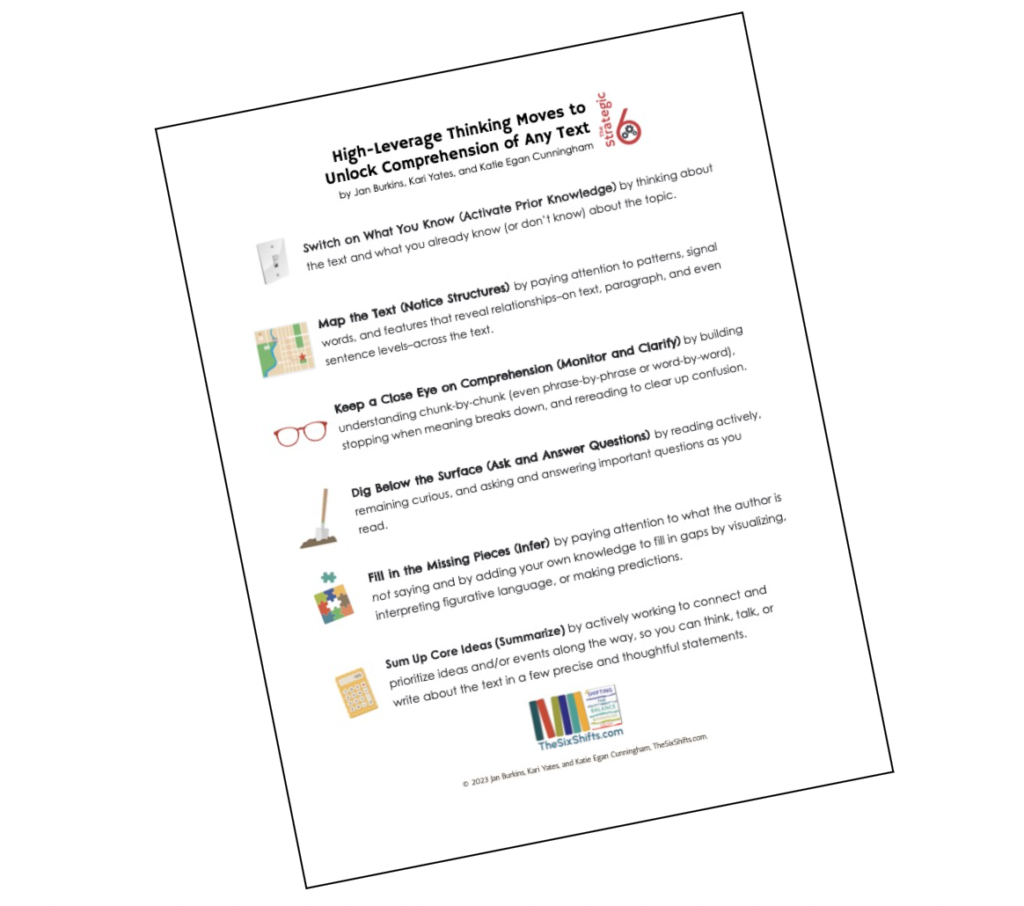
And if you’re ready to consider a shift in your approach to reading strategy instruction, we invite you to check out Shifting the Balance: Bringing the Science of Reading into the Upper Elementary Classroom (co-authored with Katie Egan Cunningham) and the corresponding asynchronous, online class. Both give a thorough explanation of the Strategic 6 Thinking Moves, including examples.

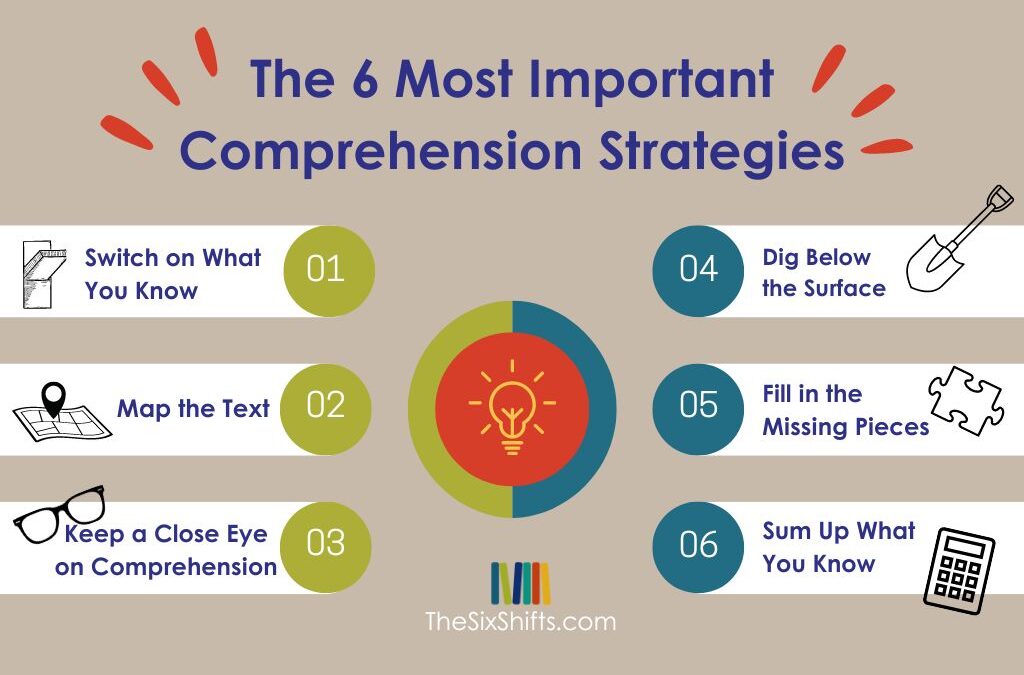


Reading strategies are thinking strategies students need to learn and use to comprehend texts. Color coding and test taking strategies are not reading strategies.